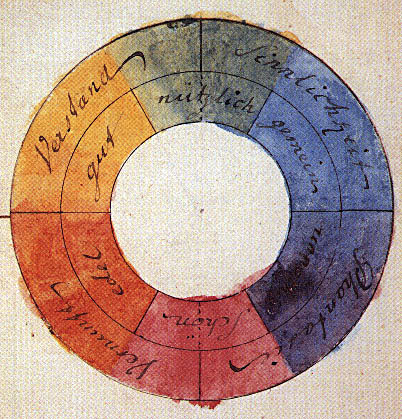|
Opponent Color
The opponent process is a color theory that states that the human visual system interprets information about color by processing signals from photoreceptor cells in an antagonistic manner. The opponent-process theory suggests that there are three opponent channels, each comprising an opposing color pair: red versus green, blue versus yellow, and black versus white (luminance). The theory was first proposed in 1892 by the German physiologist Ewald Hering. Color theory Complementary colors When staring at a bright color for awhile (e.g. red), then looking away at a white field, an afterimage is perceived, such that the original color will evoke its complementary color (green, in the case of red input). When complementary colors are combined or mixed, they "cancel each other out" and become neutral (white or gray). That is, complementary colors are never perceived as a mixture; there is no "greenish red" or "yellowish blue", despite Impossible color#Claimed evidence for the ability ... [...More Info...] [...Related Items...] OR: [Wikipedia] [Google] [Baidu] |
Color Theory
In the visual arts, color theory is the body of practical guidance for color mixing and the visual effects of a specific color combination. Color terminology based on the color wheel and its geometry separates colors into primary color, secondary color, and tertiary color. The understanding of color theory dates to antiquity. Aristotle (d. 322 BCE) and Claudius Ptolemy (d. 168 CE) already discussed which and how colors can be produced by mixing other colors. The influence of light on color was investigated and revealed further by al-Kindi (d. 873) and Ibn al-Haytham (d.1039). Ibn Sina (d. 1037), Nasir al-Din al-Tusi (d. 1274), and Robert Grosseteste (d. 1253) discovered that contrary to the teachings of Aristotle, there are multiple color paths to get from black to white. More modern approaches to color theory principles can be found in the writings of Leone Battista Alberti (c. 1435) and the notebooks of Leonardo da Vinci (c. 1490). A formalization of "color theory" bega ... [...More Info...] [...Related Items...] OR: [Wikipedia] [Google] [Baidu] |
